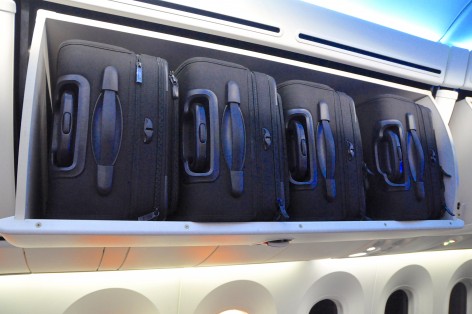Boeing’s Dreamliner: A Virtual Tour and Review
Boeing’s Dreamliner is on tour. The aircraft making the rounds has the designation ZA003, the third Dreamliner to come off the assembly line. It was built with the intention of being used as a test aircraft and the FAA considers it to be an experimental aircraft. Its first flight was on March 10, 2010 and it is currently travelling the world as part of Boeing’s Dream Tour, which began in December, 2011 with its first stop in China. On Friday, the Dreamliner landed at Dallas/Forth Worth Airport in Texas, its 33rd stop, to visit American Airlines.aaa
The Boeing 787 Dreamliner is a long-range, widebody, twin-engine jet airliner that seats between 210 to 290 passengers, depending on the airline’s requirements and configuration. It is the world’s first airliner to use composite materials for most of its construction, which makes it lighter and more resistant to corrosion. The first airline to take delivery of a Dreamliner was ANA and Japan Airlines was second in line. (Read about ANA’s first route: ANA Boeing 787 Dreamliner Tokyo Haneda to Okayama – My First Flight and Review.)
In size and capacity, the Dreamliner is similar to the Boeing 767 but it consumes 20% less fuel. From a visual standpoint, the aircraft’s distinguishing features include a four-panel windshield and noise-reducing chevrons on its engine nacelles. Inside, the most noticeable innovations are the very large windows, which have an electrochromic dimming feature instead of shades. The windows, which are at a higher eye level, make the cabin seem much more airy and give passengers a better view of the horizon.
Another area of innovation is cabin pressure and air quality. The Dreamliner’s internal pressure is set to 1,800 m (6,000′) altitude instead of 2,400 m (8,000′), the norm on older aircraft. The higher cabin pressure is possible in part thanks to the use of composite materials in its construction. Relative humidity is maintained at 15% instead of 4%, something also made possible due to the use of composites, which don’t corrode as metals do.
Cabin air is provided by compressors that don’t use engine-bleed air, thereby increasing efficiency. Air quality is better thanks to HEPA filters that remove airborne particles, a gaseous filtration system that removes odors and contaminants, and a system that removes ozone from air drawn from the outside.
The new pivoting overhead bins are very easy to open and move to make it easier to place one’s bags inside. It is possible to place items into and remove items from a bin without stepping into the aisle.
Take a virtual tour of Dreamliner ZA003 as it arrives at Dallas/Fort Worth Airport and visits American Airline’s maintenance hangar.
Click here to continue to Page 2 – A Virtual Tour of Dreamliner ZA003
Pages: 1 2







